Fiber Optic Isolated Voltage Probe
Use cheap plastic fiber optics to make a useful Isolated Voltage probe for an oscilloscope or other instrument.
Use cheap plastic fiber optics to make a useful Isolated Voltage probe for an oscilloscope or other instrument.
To make the experience fit your profile, pick a username and tell us what interests you.
We found and based on your interests.
Isolated Probe V1.0 BOM.xlsSimple bill of materials in Excel.ms-excel - 39.00 kB - 07/14/2016 at 21:58 |
|
|
Iso_Probe_V1_gerbers.zipGerber files for each layer of the Isolated probe PCB.Zip Archive - 45.81 kB - 06/22/2016 at 19:24 |
|
|
Iso_Probe_V1_layer_renders.zip.png renders of each PCB layer.Zip Archive - 1.67 MB - 06/22/2016 at 19:24 |
|
|
Iso_Probe_V1.fpcFreePCB layout of isolated probe schematic.fpc - 73.29 kB - 06/22/2016 at 19:22 |
|
|
Isolated Probe V1.0.dsnTiny Cad Schematic.dsn - 120.43 kB - 06/22/2016 at 19:21 |
|
Doesn't mean I've had any time to work on it yet.
Found a few links online I want to keep track of. First is paired plastic optical fiber. This would allow a V2 probe to use differential optical signalling to eliminate offset drift and allow gain compensation. POF pair
Next link is to an e-bay power supply kit. 5-24V input to +-12, +-5, and 3v3 output all for $7.50! Not much point making my own power supply section when you can get a kit off E-bay that's cheaper.
Got a chance to look at where the probe's high noise floor is coming from. Turns out I don't have to make my own spreadsheet, someone's already made a noise calculator. http://www.jensign.com/noise/ When I plug in the parameters for the OPA847 and surrounding parts, I get 636uVrms of noise. (3900MHz gain bandwidth, 0.85nV/Hz voltage noise, 2.5pa/Hz current noise, 30Kohm Rf, Cf around 0.2pf, Cin around 7pf) That's consistent with my 7-10mV peak to peak noise I'm seeing after the 3-6x gain from the LT1819. (a quick rule of thumb is that peak to peak noise is about 6x RMS noise)
This calculator also shows the individual contributions to the amplifier noise. In this case, Op-amp input voltage and current noise dominates. A noise-free op-amp would drop my noise floor about 5x. Looks like it's worth spending time to develop a better amplifier. It also looks like I should model the design first in LTSpice as Google show's it supports noise analysis in addition to transient and frequency response analysis.
The regulators came in and I found some AAA batteries, so it's time to test the whole mess.
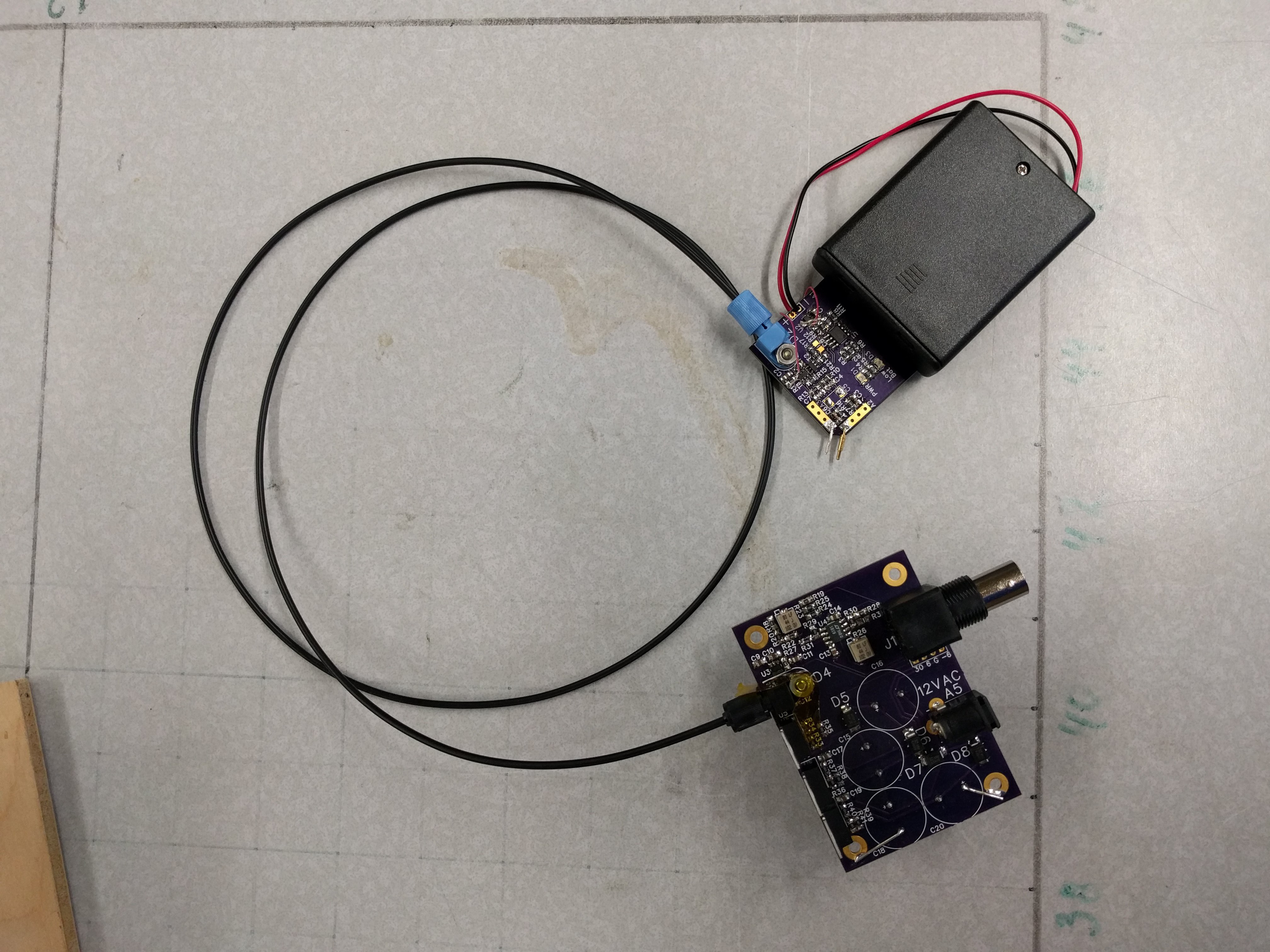
First problem is that the OPA 847 is oscillating a bit near 100MHz. The output is also rather noisy. So since the OPA847 has more bandwidth than required due to the 35MHz front end, I increased the feedback resistor R27. Boosting it to 15K was enough to quiet the oscillation, but I went all the way to 39K to help with noise. Also dropped the LT1819 gain because of the increased sensitivity of the OPA847 stage, and because the LT1819 is a significant noise source. Noise is now about 15mVrms at the output or 150mVrms at the input. While still quite useful, the noise level is a lot higher than I'd like and limits the useful signal amplitude range of the probe. Looks like I should assemble 1x and 0.2x versions of the probe as well. Maybe the next revision should have plug-in input dividers?
Rise time and delay are a respectable 10nS and 20nS. Ch1 is in Yellow and shows the input signal, while Ch2 is blue and shows the input signal after it passes through the isolated scope probe.


Trim pots R23 and R26 work very well for adjusting offset and gain respectively. Though they do require a microscopic screw driver. DC offset drifts plenty with both temperature and fiber position effects. That said, DC offset is quite stable once everything warms up as long as the fiber isn't moved much. The probe gain is much more stable. It shouldn't need adjustment as long as the probe head batteries are charged and the fiber is kept relatively straight.
Finally, I hooked the probe to an improvised white noise source that's flat to 50 MHz. The FFT of the probe output is shown below and is consistent with a bandwidth of 35MHz or so. The FFT also shows that the signal rolls off quite quickly. I did attempt to extend the bandwidth of the probe by adding a 22pf capacitor in parallel with R31. While this did extend the bandwidth, it also resulted in a blunt peek at 60-70MHz. Didn't keep the capacitor because the distortion was just too obvious.

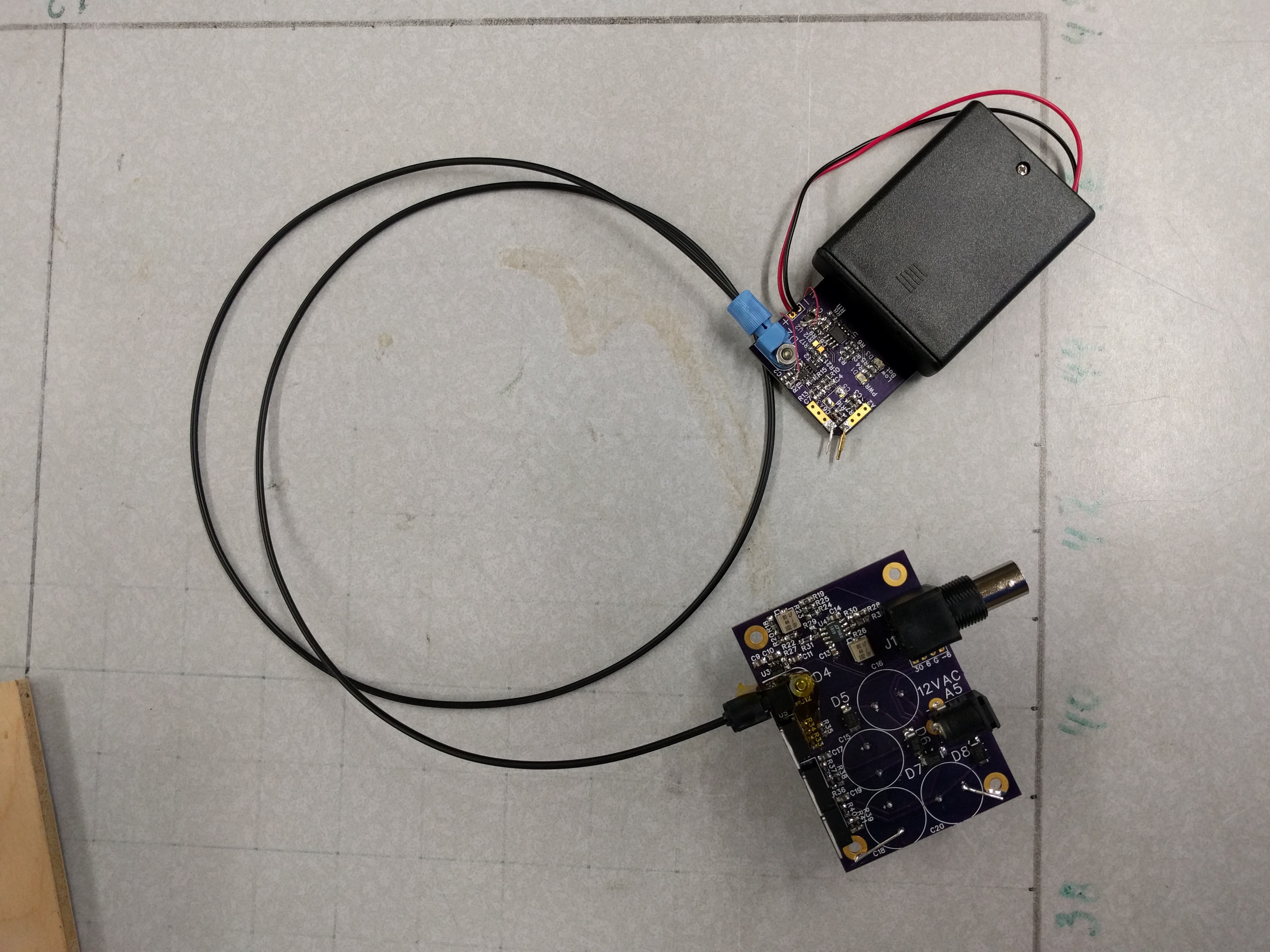
While I'm waiting for the LM317 regulators, I decided to put the pre-amp head together. Managed to get 9-10nS rise and fall times. Works out to an approximate bandwidth of 35MHz. Roll-off past 35MHz is first order as best I can tell with a noise source and scope FFT. Might be able to compensate with the post-amplifier and get more bandwidth. I'll setup a better test bench when everything is assembled.
Had to play with the input capacitor values a lot as well. Ended up putting 1pf caps in C3 and C6. (parallel to the 5M input resistors) For the input capacitors to 2v5ref, C4 ended up at 100pf and C7 at 47pf. Had to remove trimmer C5 due to the unbalanced capacitive dividers. I'll see how much variation I get, but I might have to boost C3, C4, C6, and C7 by 5-10x to get a design that is repeatable. (Though the 0.5-1pF input capacitance might be worth trying several values of C4 and C7 after assembly)
Marty
The parts came in and I've started assembly. Found out the filter-caps on the 12vac supply don't fit in the PCB. Only footprint I didn't make myself, and the holes are too small. Drilled out the holes and mounted the caps on the back, only had to make two jumpers. Next problem is that i forgot to order the LM317 regulators. So, further assembly is on hold till the missing parts come in.
PCB's arrived a week ago, but I got swamped by work :/
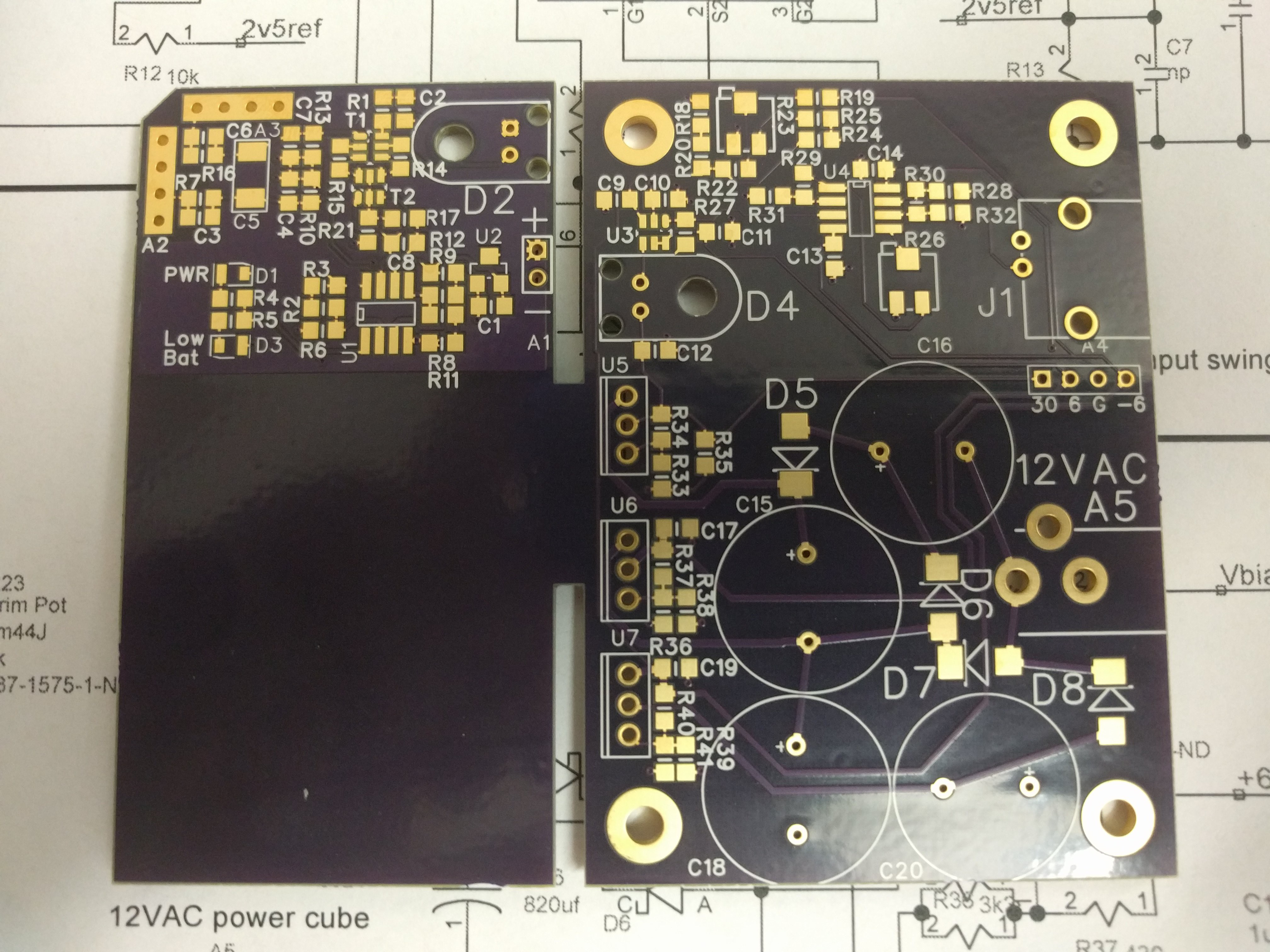
The PCB's look exactly like I layed out. Can't wait to get parts and test them!
Also made a bill of materials. (and uploaded it to the "files" section) Looks like my one-off price is $70. That's a good bit higher than I was hoping. After the first channel, about $20/channel can be saved by taking advantage of the ability to stack the post-amplifier PCB. Using a cheaper PCB vendor and shrinking the pre-amp half of the PCB would also be able to save about $10/pcb. Finally, a post-amplifier made from discrete transistors or RF parts should be able to cut $5-8/board from the BOM. But I'd only attempt that if volume is large enough to justify the extra work. (and of course purchasing volume should be able to save 10-50% off whatever is left)
PCBs should arrive sometime in the next two weeks. I'll order parts and make an official BOM when I get the shipment notice from OSHpark.
Got the PCB layout done and added to the project files. PCB is two sections that are cut apart before assembly. Left side is the probe front end with a large blank PCB tap to glue/tape to the switched 4xAAA battery box powering it. Right side is the probe back end and power supply. The mounting holes and header A4 allow multiple boards to be stacked using only one power supply. With the 12Vac 500mA power cube specified on the schematic, you can stack up to four boards and only one board needs the power supply parts populated.
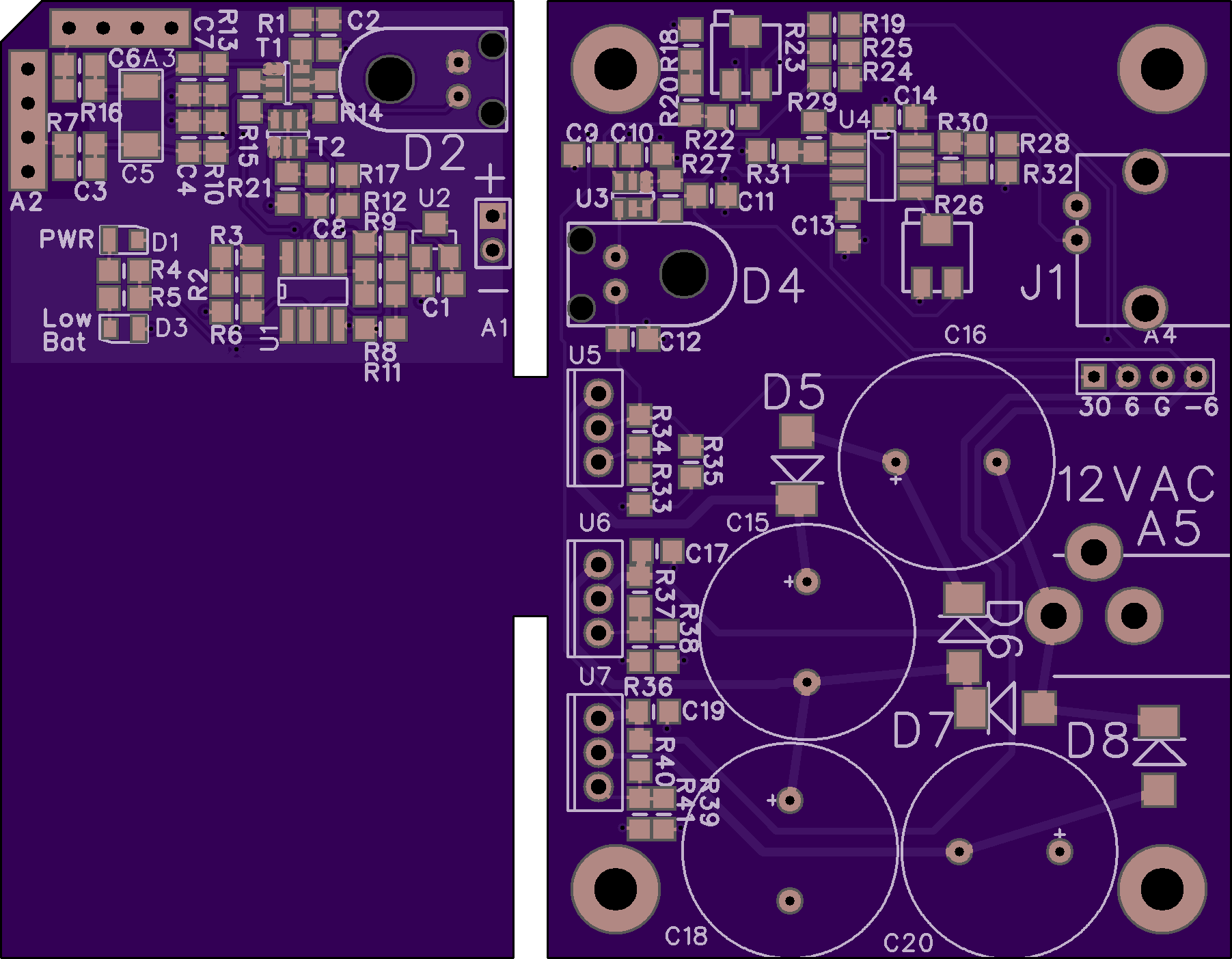
On the probe head PCB, A2 and A3 are large solder pads for signal input. The pads are designed to have jumper wires, spring-pins, rigid probes, springy probes, etc. soldered on.
Back on the back end amplifier, trimmer R23 adjusts for the DC offset while trimmer R26 gives control over the gain. At the moment I expect both offset and gain will need to be adjusted soon after the probe is turned on.
Well, I have a first cut at the probe schematic. Ideally, the probe will have 50-80MHz bandwidth, without horrible distortion and with less noise that an oscilloscope. First time I've built a circuit with a discrete input amplifier. Goal is to get a PCB laid out this week, and get it sent out with other work PCBs.
Create an account to leave a comment. Already have an account? Log In.
Become a member to follow this project and never miss any updates

 Ghani Lawal
Ghani Lawal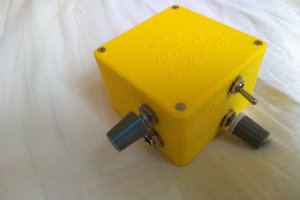
 Pepijn de Vos
Pepijn de Vos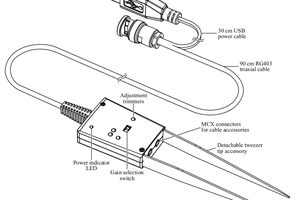
 Petteri Aimonen
Petteri Aimonen
 Bud Bennett
Bud Bennett